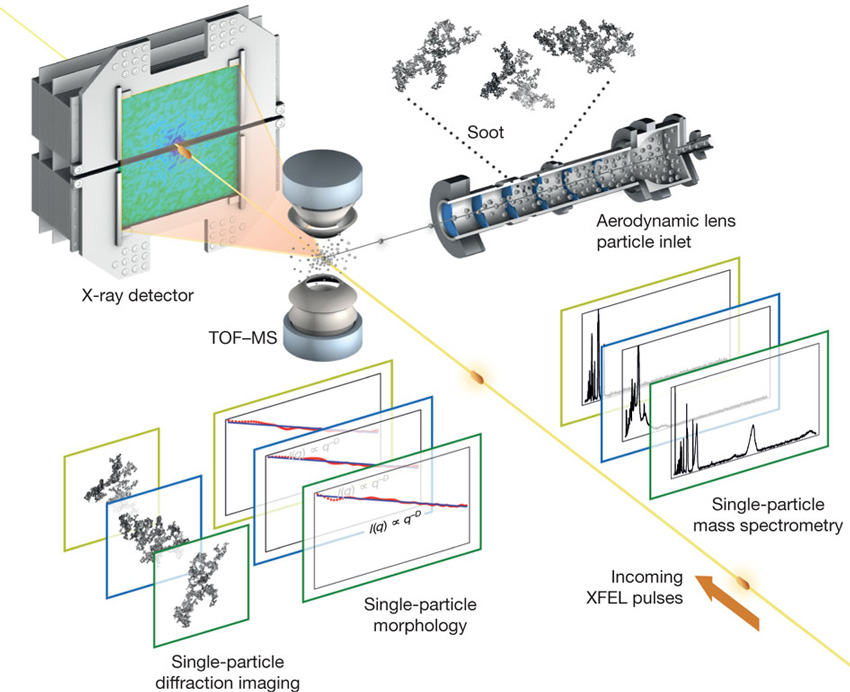More Than Meets the Eye: X-ray Vision Exposes Aerosol Structures
Soot particle diversity and complexity discovered using ultrafast x-rays at the Linac Coherent Light Source (LCLS).

The Science
By passing soot particles through the path of the LCLS x-rays, researchers measured the diffraction patterns of particles enabling them to determine the shape and structure. Results showed they were surprisingly diverse and complex, thus validating theoretical models.
The Impact
This information will improve our understanding of atmospheric processes important to climate change, as well as enabling the design of cleaner combustion sources, from car engines to power plants. This study also pioneers a method for studying a broad range of individual particles, such as cells or proteins, and opens up exciting possibilities in the study of aerosol dynamics using intense, ultrafast x-ray laser pulses, such as those at SLAC’s LCLS.
Summary
Soot and similar particles, especially those 2.5 microns or less in diameter, which are the most dangerous to human health, are difficult to image while airborne. Unfortunately when placed on a surface for examination with a microscope, they tend to clump together, ultimately changing their shape. In this experiment, BES-funded researchers wafted individual soot particles up to 3.25 microns in diameter into the path of the LCLS laser beam. With laser pulses that are extraordinarily short and tremendously intense, it was possible to capture information about the particles, only millionths of a meter across, in the quadrillionths of a second before they are blown apart. Diffraction patterns were measured from single particles, and mass spectroscopy probed the composition of the particles. The researchers found that, like snowflakes, no two soot particles are alike. However, they do exhibit similar patterns of complexity at different scales, which is characteristic of a fractal. Other research methods have probed the fractal properties of soot, but the examination of individual soot particles, airborne and in their natural state, revealed more diversity and complexity in fractal dimensions then previously thought. Results from this study provide important information for fields ranging from toxicology to climate science. The long-term goal of this research is to visualize airborne particles as they change shape in response to their environment; for example, watching soot formation in combustion engines may provide information that will lead to lower emissions from diesel engines.
Contact
N. D. Loh
SLAC National Accelerator Laboratory
duaneloh@slac.stanford.edu
Funding
DOE Office of Science, Office of Basic Energy Sciences, Chemical Sciences, Geosciences, and Biosciences Division
Publications
N. D. Loh, et al., “Fractal morphology, imaging and mass spectrometry of single aerosol particles in flight”, Nature 486, 513 (2012). [DOI: 10.1038/nature11222]
Related Links
Highlight Categories
Performer: SC User Facilities , BES User Facilities , LCLS



